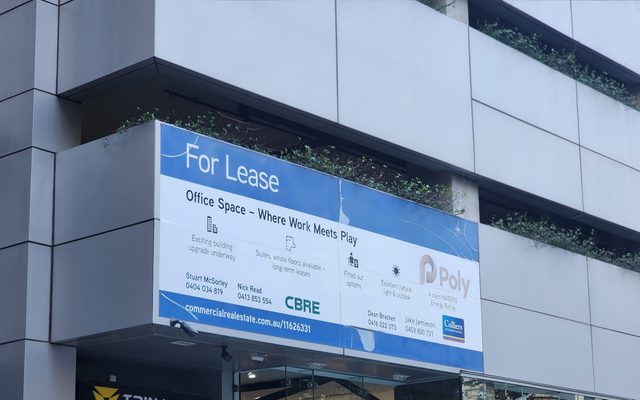This article is from the Australian Property Journal archive
LOCATION is becoming increasingly important in Australia’s metro office market, as buildings in areas with great amenity and strong transport infrastructure outperform – sometimes better than higher-graded buildings in poorer locales.
That’s according to a new Colliers report, which shows vacancy levels in metro office locations are beginning to improve, although many remain above the long-term average, particularly those within markets that have experienced higher levels of supply over the last two years.
“Newer, well-located buildings, continue to benefit from the flight-to-quality and flight-to experience thematic, and are more readily occupied, leaving behind backfill space and keeping vacancy elevated in secondary stock,” the report said.
North Sydney has seen premium face rents grow 6.7% over the 12 months to September, while A-grade rents lifted by 2.9%, ahead of about 30,000 sqm of supply expected to be delivered in 2023, including the near-15,000 sqm 2-4 Blue Street. Vacancy rates currently sit at 19.3%, more than double the 10-year average vacancy.
Net effective rents have increased in comparison to nearby markets such as St Leonards and Chatswood where effective rents have seen no change or declined. The St Leonards/Crows Nest office market is seeing 18.6% vacancy and currently undergoing an urban renewal, with JQZ’s 558 Pacific Highway mixed-use development expected to completed by December, while there are three buildings in the pipeline as part of the Crows News Metro Over Station development.
Chatswood is also looking at major new additions, including Chatswood Chase and Chatswood RSL which will add up to 43,000 sqm.
The Sydney CBD fringe added 4,570 sqm of newly renovated office space and construction on 40-50 Francis Street and 65 Foveaux Street will bring nearly 4,000 sqm this quarter. Total office enquiry increased 41%, slightly below the increase of 45% seen across the CBD and metro areas, with relocation the leading driver of office demand. A-grade gross face rents lifted slightly and incentives came down from 23% to 20%.
In Parramatta, incentives for prime stock has increased, while B-grade net face rent were up 2.5% over the September quarter. Vacancy in Sydney’s second CBD is at 19.3%, according to the Property Council.
Macquarie Park had the lowest rise in vacancy among Sydney’s metro offices, while premium grade face rents lifted 3.0% year on year and A-grade rents lifted 0.6%.

Melbourne’s city fringe A-grade net face rents rose 0.9% over the year to September for new buildings, and by 3% for existing stock. B-grade buildings saw a 2.4% fall. The development pipeline into 2023 is softer than previous years, and half of the 63,000 sqm under construction is pre-committed.
Southbank saw A-grade net face rents rise 7.5% over the year to September, while B-grade rents slipped 1.6%, and growing incentives have seen B-grade net effective rents fall by 10.5% over the 12-month period.
On St Kilda Road, A-grade net face rents lifted 4.1% year-on-year while B-grade rents suffered from high vacancy and fell by 4.1%.
In the inner east, A-grade net face rents lifted 2.5% over 12 months for new buildings, and by 4.7% for existing A-grade and 7.3% for B-grade. Incentives inched upwards but remain among the lowest in Melbourne’s metro sub-markets and CBD.
Net effective rents have lifted 9.7% over the year in the outer east.
About 72,400 sqm is planned for completion across Brisbane’s metro market, following 40,500 sqm being delivered across Mobo South Brisbane, Jubilee Place in Fortitude Valley and The Greenhouse in West End. Vacancy rates in July were 15.6%, higher than the CBD but the lowest level in 18 months.
Adelaide’s fringe market saw 3.6% increase in A-grade face rents since March and a 3.5% increase in C-grade rents. Incentives were up 5%.




